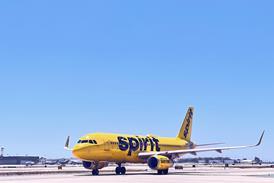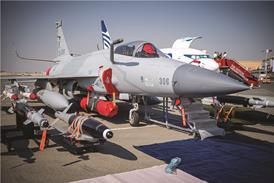When the US expanded its civil aviation agreement with China in 2007, US operators jumped at the chance to apply for frequencies as the number of daily passenger flights would more than double by 2012.
Under the current US-China aviation bilateral, one new daily flight was added in both 2007 and 2008. Four new daily services became available this year, followed by three more next year, and two more each in 2011 and 2012, giving US operators the ability to fly up to 23 daily flights to China.
The deal also allowed the designation of three more US carriers to China, one in 2007 and two in 2009. Regulators selected Delta Air Lines in 2007, followed by US Airways and all-cargo carrier Evergreen Airlines this year. Additionally, limits on the number of cargo flights and operatorswill be lifted by 2011.
Seven carriers, ranging from incumbent US-China operator United Airlines to the now defunct Maxjet Airways, vied for the new China passenger connections, which had been limited to 10 daily flights into Beijing, Shanghai and Guangzhou.
Carriers including Delta, United and American Airlines created websites to garner public support for their China applications, and enlisted local businesses and chambers of commerce to file supporting comments to the US DOT.
The confidence by each carrier in its ability to launch new destinations in the growing Chinese market was fuelled in part by open credit markets at the time the allocations were awarded, explains IATA chief economist Brian Pearce. But the subsequent tightening of global credit markets has since made it more challenging to launch new operations.
Airlines that sought deferral of new route launches to China in 2008 cited spiking fuel costs as the main driver for delaying inaugurating the new services.
United, which in 2007 won San Francisco-Guangzhou rights and aimed to start Boeing 777-operated flights in 2008, told regulators last year that its estimated fuel costs for that route jumped to more than $70 million per year from an estimated $46 millionwhen it applied to serve that route in 2007.
Fuel costs, coupled with lower-than-forecast demand, prompted the carrier to seek its first deferral last year. After receiving approval to delay flights until this June, the Star alliance member was awarded a second waiver to push the launch to June 2010.
United managing director of international and regulatory affairs, Julie Oettinger, reflected the concerns of many US majors when she outlined United's latest deferral in a US DOT filing. When the carrier applied for its first extension, "United was hopeful that economic conditions would improve and that travel demand would recover. Unfortunately, however, in the interim, the global economic crisis has further eroded travel demand, including that for US-China services".
United is not alone in its postponement as four other US airlines have secured dormancy waivers for new China rights; Northwest, Delta, American and US Airways.
ROUTE SUSPENSIONS
Delta has received regulatory approval to suspend Atlanta-Shanghai flights from this month through to September 2010 while Northwest has delayed the start of Seattle-Beijing flights until 25 March 2010. Northwest also received approval to use only four of its seven Detroit-Shanghai frequencies until March 2010
Delta Northwest would not be drawn on future demand. "We continue to watch demand closely in China and all regions in the world to make sure capacity closely matches demand," it says.
Although most operators sought to postpone service until next year, US Airways attempted to put back its Philadelphia-Beijing service until March 2011. The carrier in a DOT filingargued the global economic recession that followed record fuel costs made the launch of its new service unfeasible for the near-term.
US Airways, which originally received approval to launch Philadelphia-Beijing flights this March was denied its second deferral request and has until March 2010 to use its China frequencies. In its decision the DOTsaid a 2011 postponement "is premature" as it cannot anticipate the market conditions so far in advance of the end of the current waiver period. US Airways can reapply for another postponement closer to the expiration of its first waiver.
Not all airlines pursued dormancy waivers, but even carriers with incumbent and new China rights sought to alleviate their demand concerns.Continental Airlines presently operates daily, year-round New York-Shanghai and Beijing flights, but hasapproval to convert two frequencies on each city pair to seasonal services in case demand weakens. "This gives us the flexibility to match demand, should we need to use it. If consumer demand is not there, we won't have to sacrifice the route," says Continental.
Pearce from IATAexpects passenger demand in Asia to rebound before North America and Europe as Asian economies including China began to improve during the second quarter. But he cautions: "It's going to take a long time to recover the levels of travel that were evident in 2007." The transpacific market has been one of the weakest performers during the downturn as premium demand fell 27.9% year-on-year this June.
Despite dismal results recorded this year, and the slew of US-China dormancy waivers in place, Pearce says China remains of interest to US carriers, who will want to expose themselves to high-growth markets once the economy rebound. "Markets in China make sense," he says.
This echos American's attitude towards the seven weekly Chicago-Beijing frequencies it won in 2007. It was due to start this year, but thia has been postponed until April 2010. "We have high hopes for this market and expect it will perform well as the economy recovers," it says. "China is an important and growing market for the US and American Airlines."
Per the 2007 aviation accord, US and Chinese officials agreed to resume negotiations early next year to establish a timetable to achieve full liberalisation.Current US carrier services
|
|
Recent/future rights allocations
|
|
US carrier China deferrals
|
Source: Flight Daily News























